A cemetery used for centuries is an expression of the enduring relationship between the living and the dead.

One of archaeology’s paradoxes is that in order to comprehend ancient people’s lives, often the best place to look is not through the broken sherds of the pots they used to cook their family dinners, or at what may be left of their homes after hundreds or even thousands of years, but in their graves. How people are buried, the things they are buried with, and their physical remains can reveal much about those who might otherwise be lost to history. Are their graves filled with valuable items that mark them as wealthy, or with only a few small treasured possessions? Or were they interred with nothing at all and simply consigned to the earth? Did they succumb to a common disease, or were they casualties of war? Do their bones show the passage of many years, or did they die young?
Burials can also illuminate cultural circumstances and values. “People’s bodies can tell us a great deal about them as biological individuals,” says mortuary archaeologist Kate Emery of the George Eastman Museum in Rochester, “but bones also have a lot to say about them as social individuals.” The materials available, the types of coffins chosen, the inclusion of provisions for the afterlife, and even the position of the deceased’s body are testimony to economic realities and to belief systems that can be difficult to detect in the writings of ancient authors. “Excavating the dead is actually very humanizing compared to a text,” says Emery. “For the most part we don’t know anything about who they were or many details about them, so studying their bodies and what they chose—or what mourners chose—to put around them in death adds a richness to the story of the past that is missing. Text allows us to remove ourselves from people in some way, but when you are actually looking at their bodies and considering who they were, it’s very intimate.”
This story is from the {{IssueName}} edition of {{MagazineName}}.
Start your 7-day Magzter GOLD free trial to access thousands of curated premium stories, and 9,000+ magazines and newspapers.
Already a subscriber ? Sign In
This story is from the {{IssueName}} edition of {{MagazineName}}.
Start your 7-day Magzter GOLD free trial to access thousands of curated premium stories, and 9,000+ magazines and newspapers.
Already a subscriber? Sign In
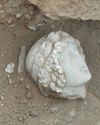
Digs & Discoveries - A Friend For Hercules - Archaeologists discovered a finely carved head depicting Apollo, god of the sun, music, and poetry.
While digging at the crossroads of the two main streets in the ancient city of Philippi in northern Greece, archaeologists discovered a finely carved head depicting Apollo, god of the sun, music, and poetry.
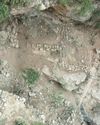
Digs & Discoveries - A Fortress Sanctuary - A sprawling 2,000-year-old fortress in the Zagros Mountains of Iraqi Kurdistan appears to have included a sanctuary dedicated to the ancient Persian water goddess Anahita.
A sprawling 2,000-year-old fortress in the Zagros Mountains of Iraqi Kurdistan appears to have included a sanctuary dedicated to the ancient Persian water goddess Anahita.
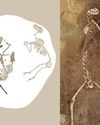
Like Cats And Dogs – Archeologist fund the skeleton of a male Eurasian lynx (Lynx lynx), a notoriously shy creature.
Оn the periphery of Zamárdi, an ancient lakeshore settlement in west-central Hungary, archaeologists uncovered a nearly five-foot-deep beehive-shaped pit with the skeletons of four adult dogs buried in successive shallow layers.
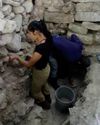
A Dynasty Born In Fire- How an upstart Maya king forged a new social order amid chaos
At the beginning of the Terminal Classic period (ca. A.D. 810-1000), many of the great kingdoms of the southern Maya lowlands-among them Tikal, Palenque, and Calakmul-were being abandoned or collapsing. For many years, scholars have assumed that most, if not all, the other kingdoms across the Maya world must have also been in steep decline.
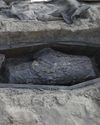
Medical Malfeasance - Archaeologists uncovered two coffins during excavations of a nineteenth-century cemetery in Quebec City that provide evidence of the illicit practice of diverting corpses for the study of human anatomy.
Archaeologists uncovered two coffins during excavations of a nineteenth-century cemetery in Quebec City that provide evidence of the illicit practice of diverting corpses for the study of human anatomy. Starting in 1847, medical students were required to have practical experience studying human anatomy, but legal options to procure cadavers were limited
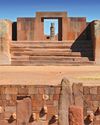
RISE AND FALL OF TIWANAKU
New dating techniques are unraveling the mystery of a sacred Andean city
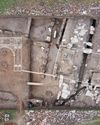
Making a Roman Emperor
A newly discovered monumental arch in Serbia reveals a family's rise to power in the late second century A.D.
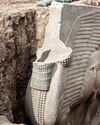
The Assyrian Renaissance
Archaeologists return to Nineveh in northern Iraq, one of the ancient world's grandest imperial capitals

Java's Megalithic Mountain
Across the Indonesian archipelago, people raised immense stones to honor their ancestors
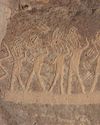
THE SONG IN THE STONE
Located in a desert gorge in southern Peru, Toro Muerto is one of the richest rock art sites in South America. It includes at least 2,600 boulders bearing petroglyphs, many featuring figures known as danzantes who appear to be dancing.